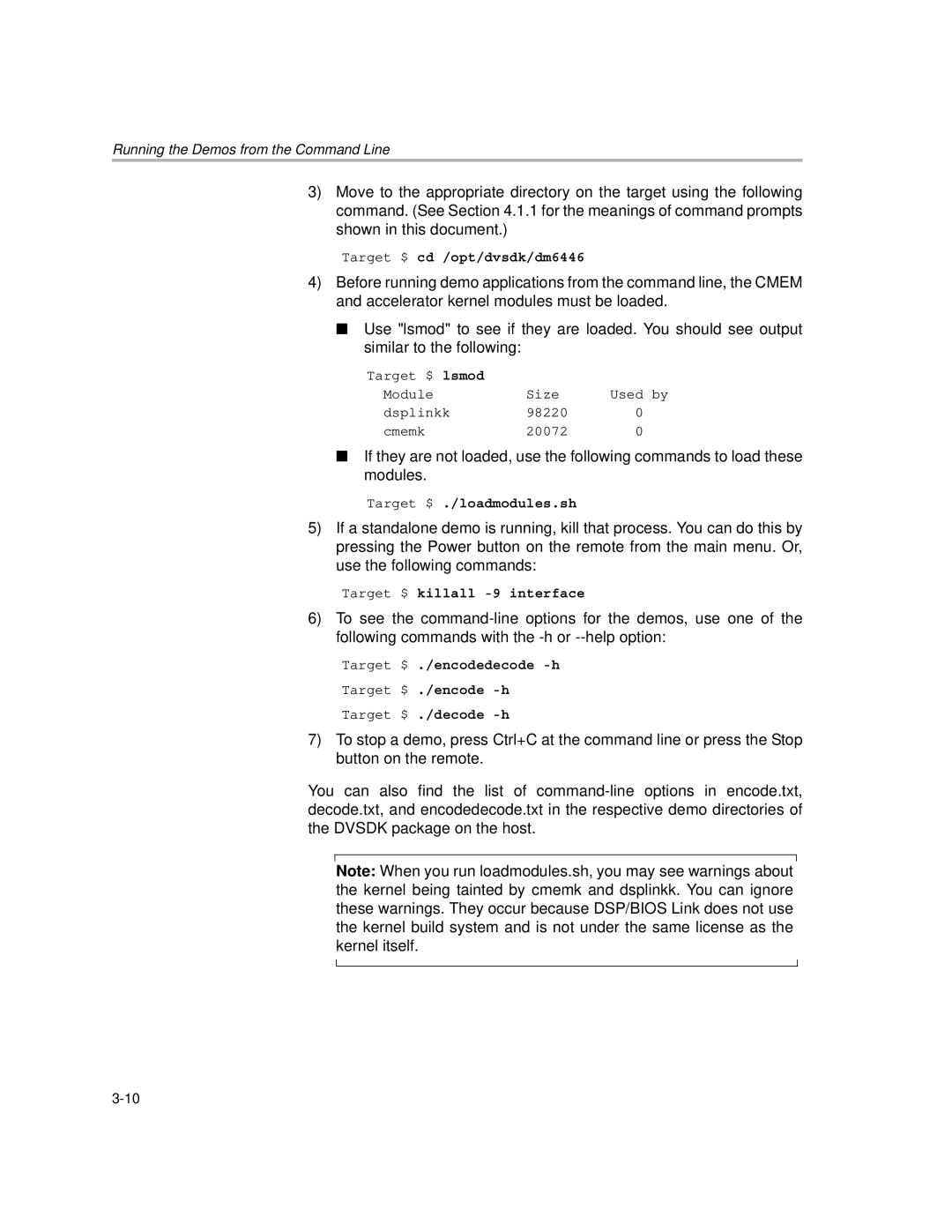
Running the Demos from the Command Line
3)Move to the appropriate directory on the target using the following command. (See Section 4.1.1 for the meanings of command prompts shown in this document.)
Target $ cd /opt/dvsdk/dm6446
4)Before running demo applications from the command line, the CMEM and accelerator kernel modules must be loaded.
■Use "lsmod" to see if they are loaded. You should see output similar to the following:
Target $ lsmod |
|
|
Module | Size | Used by |
dsplinkk | 98220 | 0 |
cmemk | 20072 | 0 |
■If they are not loaded, use the following commands to load these modules.
Target $ ./loadmodules.sh
5)If a standalone demo is running, kill that process. You can do this by pressing the Power button on the remote from the main menu. Or, use the following commands:
Target $ killall
6)To see the
Target $ ./encodedecode
Target $ ./encode
Target $ ./decode
7)To stop a demo, press Ctrl+C at the command line or press the Stop button on the remote.
You can also find the list of
Note: When you run loadmodules.sh, you may see warnings about the kernel being tainted by cmemk and dsplinkk. You can ignore these warnings. They occur because DSP/BIOS Link does not use the kernel build system and is not under the same license as the kernel itself.
